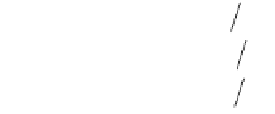Graphics Reference
In-Depth Information
We describe a Newton-Raphson approach. The idea is to start with a guess (t
0
,u
0
,v
0
)
for a solution to equation (13.11) and then define a sequence (t
i
,u
i
,v
i
) that converges
to an actual solution. Assume that we have already defined
r
i
= (t
i
,u
i
,v
i
), i ≥ 0. Using
the linear function
(
)
=
(
)
+
(
)
(
)
htuv
,,
rtuv
,,
Drtuv t tu uv v
,,
-- -
,
,
i
i
i
i
i
i
i
i
i
as an approximation to the function r(t,u,v) in a neighborhood of (t
i
,u
i
,v
i
), we get
the next iterate (t
i+1
,u
i+1
,v
i+1
) by solving h(t,u,v) =
0
. Let
q
i
= q¢(t
i
),
p
i
= p
u
(u
i
,v
i
), and
p
i
= p
v
(u
i
,v
i
). It is easy to show that
(
)
=+
t
(
)
-
u
(
)
-
v
(
)
htuv
,,
rq
t
-
t
p
u u
-
p
v
-
v
,
i
i
i
i
i
i
i
so that we need to solve
t
i
u
i
v
(
)
-
(
)
-
(
)
=
rq
+-
tt
p
uu
-
p
vv
-
0
.
(13.12)
i
i
i
i
Since,
p
i
¥
p
i
=
0
,
u
u
t
(
)
-¥
u
v
(
)
=
prpq
¥+ ¥
tt
-
pp
vv
-
0
.
i
i
i
i
i
i
i
i
But
q
t
i
is orthogonal to
p
i
¥
q
i
and so
q
i
•(
p
i
¥
q
i
) = 0 and
(
)
-∑ ¥
(
)
t
u
t
u
v
(
)
=
qprqpp
∑
¥
vv
-
0
.
(13.13)
i
i
i
i
i
i
i
Finally, let
n
i
=
p
i
¥
p
i
be the normal to the surface at r(t
i
,u
i
,v
i
) and set D
i
=
q
t
i
•
n
i
.
Then equation (13.13) can be solved for v. A similar argument can be applied to the
variables u and t. What we finally get are equations
=- ∑
( ( )
=- ∑ ¥
i
u
i
v
t
t
ppr
D
i
+
1
i
i
i
(
(
)
)
i
v
t
uu
pqr
qpr
D
i
+
1
i
i
i
(
(
)
)
t
u
v
=+ ∑
v
¥
D
.
(13.14)
i
+
1
i
i
i
i
i
The sequence (t
i
,u
i
,v
i
) defined by equations (13.14) will converge to a point in the inter-
section of our curve and surface provided that we do not run into the usual problems
associated to Newton-Raphson methods. Getting all the intersection points hinges on
being able to come up with enough initial guesses.
13.4.3
Surface Sections
We begin our look at surface-surface intersections with the special case of finding a
section of a surface
S
. This includes the problem of finding contours, although we
will say more about that in Section 14.6.
Definition.
The intersection of a set in
R
n
and a hyperplane is called a
section
of
that set. If the hyperplane is parallel to a coordinate plane, that is, if it is defined by
an equation of the form x
i
= c, where c is constant, then the section is called a
contour
.



